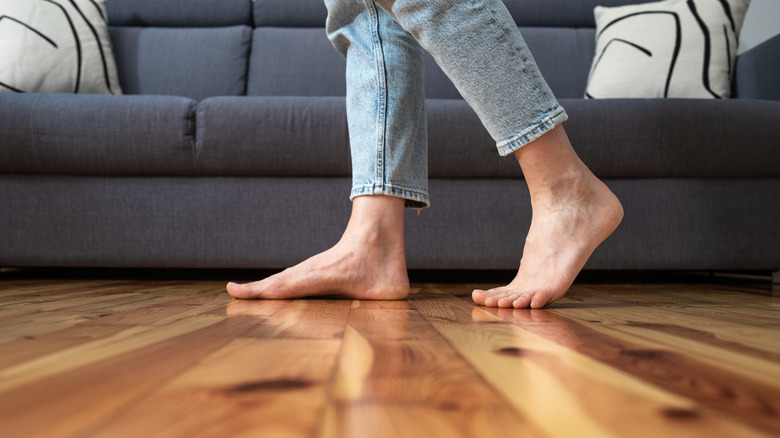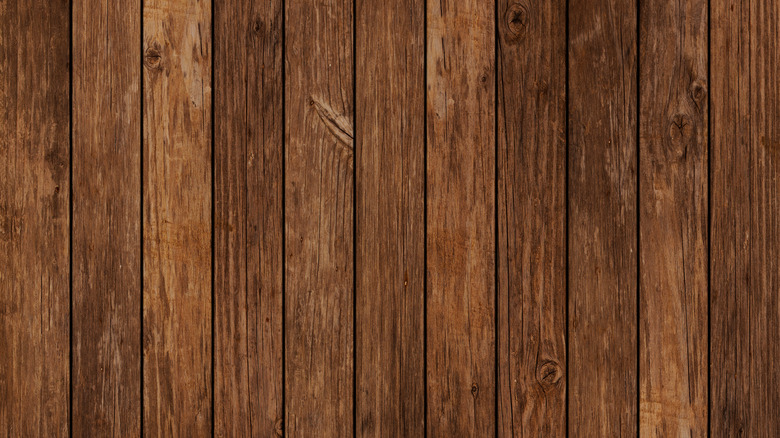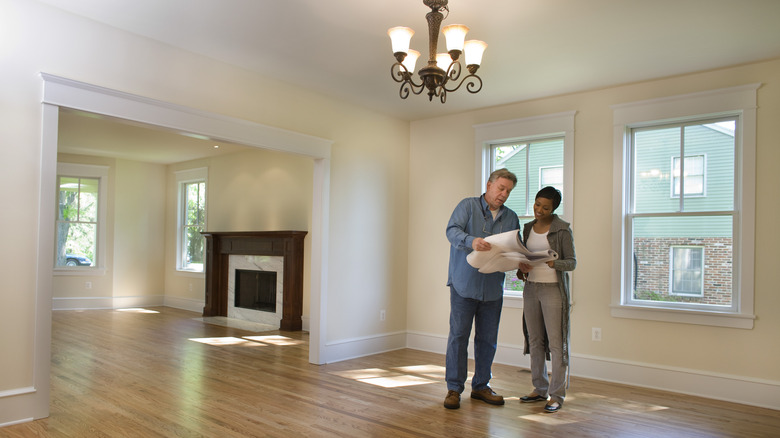Are Creaky Floors A Deal Breaker When Selling An Older Home? David Bromstad Weighs In
We may receive a commission on purchases made from links.
When you prepare to sell a home, you want potential buyers to feel like your home is not only comfortable and visually appealing, but also a sound investment. That means that everything in it should be in tip-top condition, particularly the major structural elements. Consequently, if you have creaky floors, you may think it's a dealbreaker, but luckily, it doesn't seem to be, according to HGTV's David Bromstad.
Bromstad, the host of "My Lottery Dream Home," described a home that he considered "idyllic" in Season 14, Episode 7, and it included creaky floorboards. "My favorite thing about the house is the creaky floors," he said. "That's when you know that the house is old, has tons of character, and it just brings back childhood memories."
That quote shows that viewpoints about homes are purely subjective. While some people may want everything to be perfect, others might consider a creaky floorboard endearing. So you might not have to stress about it before putting your home on the market.
What creaky floors mean
While Bromstad says that squeaky floorboards aren't a deal breaker — and in fact, can be an asset — it's still important to consider the potential downsides to some buyers. The groaning of wood can be unsettling, leading some to wonder if the floor is structurally sound. For others, the noise may be a deal breaker, conjuring up images of sleepless nights and embarrassing moments when guests are present. Creaky floors can also give the impression that the home has not been well-maintained, potentially leading buyers to question the overall condition of the property.
Before panicking about the impact of creaky floors on the sale of an older home, it's important to understand what causes them in the first place. In many cases, groaning floors are simply a result of natural settling and wear and tear over time. As wooden boards expand and contract with changes in temperature and humidity, they can become loose and squeaky. Additionally, issues with the subfloor, such as unevenness or rot, can also contribute to the noise.
In some cases, creaky floors may be a sign of more serious structural problems, such as foundation issues or termite damage. However, these cases are relatively rare, and a thorough inspection by a qualified professional can help determine the extent of the issue.
What sellers can do about creaky floors
If you find that your buyer pool is voicing concerns over your floors, there are ways to mitigate the impact of the floorboards. One approach is to change your buyer pool by highlighting the charm and character of the older home, emphasizing the unique features and historical significance of the property. This can appeal to buyers who are looking for a home with personality and character, and who are willing to overlook some of the creaky floor's drawbacks. After all, people who want an older home know that it's not going to be in tip-top shape.
Another strategy is to address the practical concerns head-on. Sellers can consider hiring a professional to inspect the floors and identify any underlying issues. By disclosing this information upfront and providing a plan for repairs or maintenance, sellers can demonstrate transparency and build trust with potential buyers. Home inspectors don't usually consider creaky floors alone to be a structural problem but will inspect the home for all safety issues.
Finally, sellers can consider making cosmetic updates to the floors, such as refinishing or replacing worn-out boards. You can also buy a DIY floor repair kit. This can help to reduce the noise and improve the overall appearance of the floors, making the home more attractive to buyers. By being proactive and addressing the creaky floor's concerns, sellers can turn a potential deal breaker into a minor issue, and increase the chances of selling their older home.


